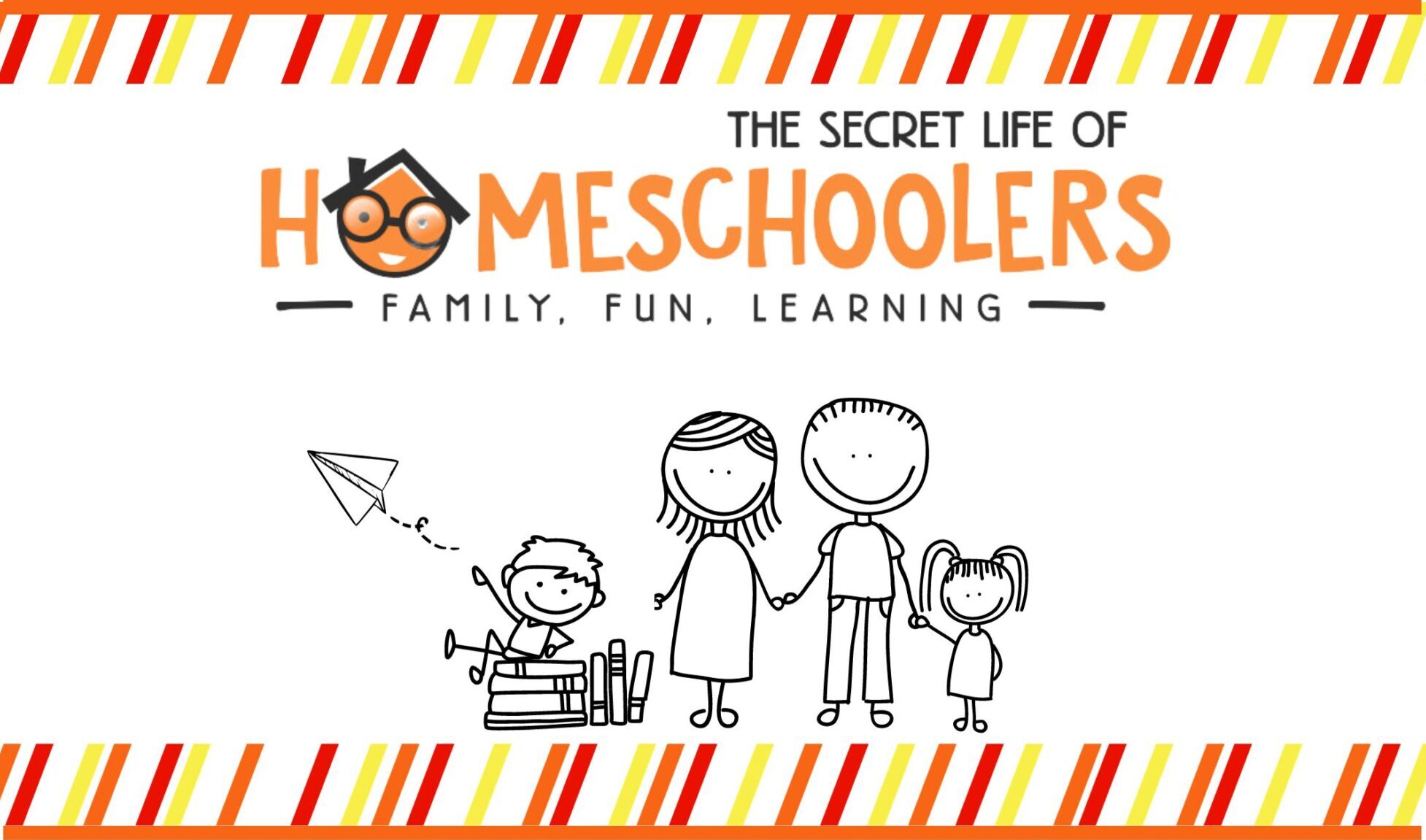Do you have a teen or tween in your home or work with this age group? I have two kids in middle school, 6th and 8th grade (so I have both). I am finding that picking a fun activity for teens and tweens can be hard.
As I work with this age group, in my homeschool and different youth groups, I am realizing things that used to be a lot of fun in the past are now seen as boring. I still want to have fun with these kiddos, but I now have to re-think what might be fun. Hint, sidewalk chalk isn’t seen as fun anymore.
Recently, my kids and their Scout Troops have been working on the Game Design merit badge. It is a pretty cool activity. The middle school-aged kids enjoyed it, and the high school teens had fun, too.
I wanted to come up with a way parents and teachers could adapt it in their home or classroom. You’d be surprised what a great critical thinking and problem-solving activity this is. Also, kids work on communication skills, writing, and they may even incorporate some engineering, technology, and math skills depending on their game.
So, here is how you can get started.
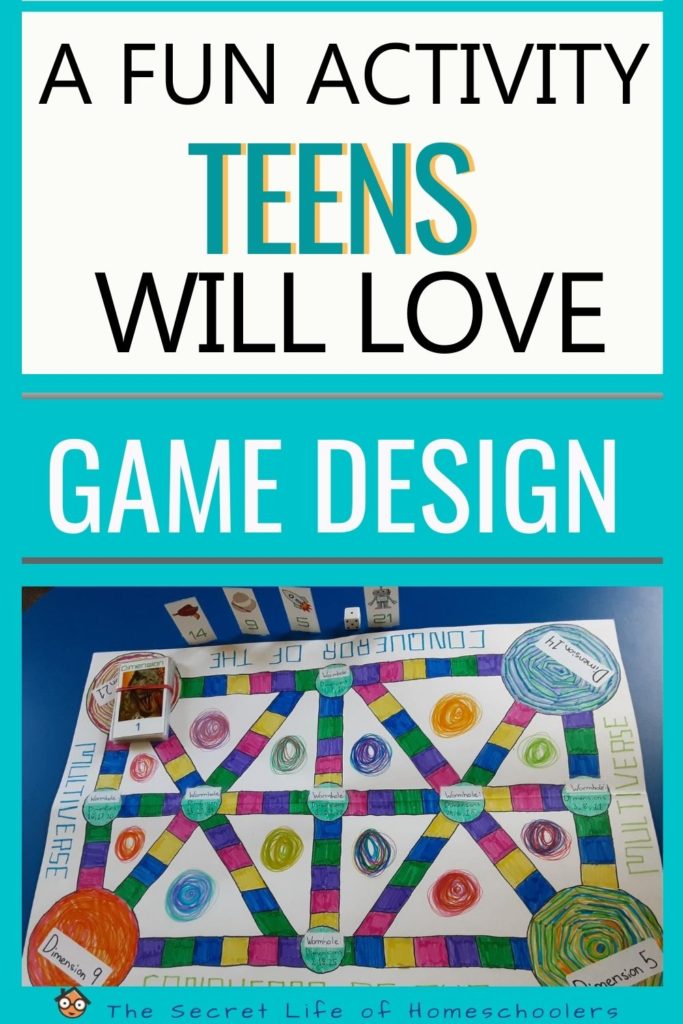
A Fun Activity for Teens (and Tweens)
I can’t say I know any kids that don’t like to play some kind of game. Many teens (okay, many people) are into video games. That’s okay, though, because video games are games. Games don’t necessarily mean board games. There are many types, so I’m sure every kid has some kind of game they like.
We’ll take a look at what goes into making a game, regardless of which kind of game it is.
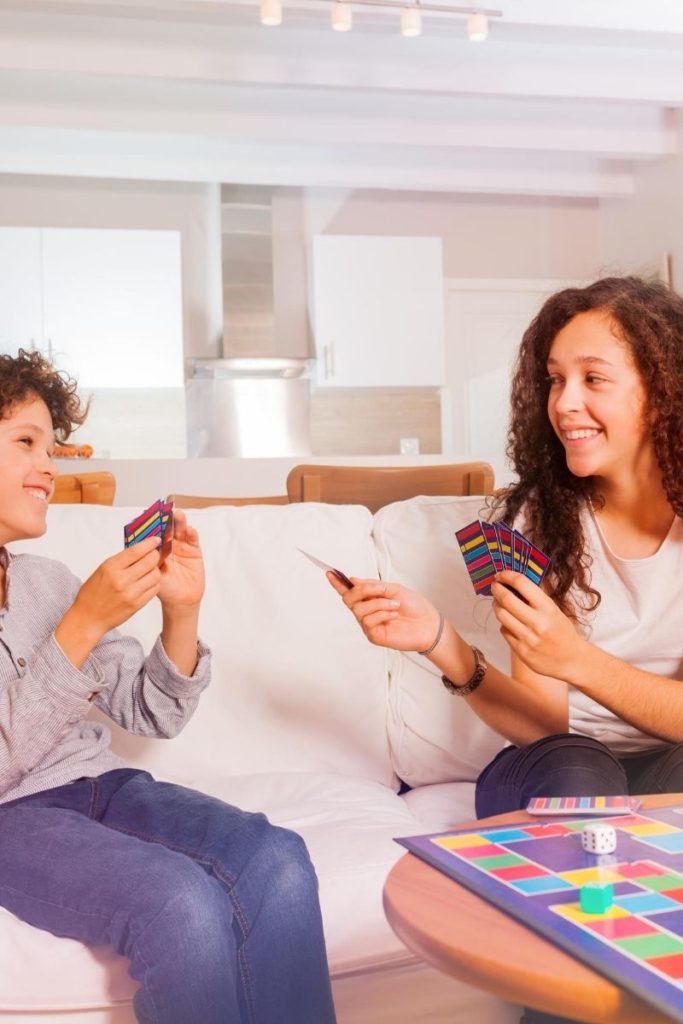
Creating a Game- Getting Started
Brainstorming
First things first, you will want to get kids thinking about games. You can either be met with enthusiasm, or you may need to prod them a little bit. Once they get started, I’m sure ideas will flow.
Have the kids brainstorm the following:
- What kinds of games are out there? (board games, computer, card, dice, word, outdoor, etc.)
- Can the games be broken into other categories? (strategy, matching, collecting, points-based, action, etc.)
- What types of games do you like to play?
- Describe what makes a good game.
- Are their certain features you look for in a game?
After you’ve brainstormed ideas about the types of games, features in a good game, and what they like, you are ready for step 2.
Explore Games
To better understand HOW to create a game, kids need to analyze games. You can do this a couple of ways.
- Bring is a few samples of different types of games.
- Have the kids pick out some different kinds of games.
No matter which you choose you want a selection of games. Also, you should pick games that aren’t overly complicated.
Now the fun begins. Let the kids play some of the games. Encourage the kids to try a game they normally wouldn’t play or aren’t familiar with. Set this up however it works for you.
Analyze
Once the kids have had a chance to try some games, it is time to analyze them. Have them consider the following things?
- What was the object of the game?
- Were the rules clear?
- Was the game easy to figure out?
- Did you like the game design? (board, cards, player pieces, score sheets, etc.)
- What type of game was it?
- Did you like the game? Why or Why not?
- Even if you didn’t like the game, what is something you DID like about it? (easy to follow rules, object, game pieces)
- Would you play it again?
All of these questions help kids think a little more about the game. When they understand parts of a game, they can better create one for themselves.
Let’s Get Creating
Finally, it is time to get creating. Trust me, it will be a challenge. However, it will be a fun activity for teens. Kids can create ANY kind of game they like. You can even have them work with others if you want. It is up to you depending on your setting.
STEP 1: What kind of game?
So, the first step for kids is to choose the type of game they want to make.
- Card
- Dice
- Boardgame
- Outdoor game (Here is an example of a simple outdoor game.)
- Role-playing
- Computer
Whatever, they can come up with. The list above is not exhaustive. It is just some basic types of games.
STEP 2: Game Concept
All games have a concept and some kind of objective. What will it be?
Kids need to flesh this one out. Some may argue you come up with the concept first and then find the game format that would work. I honestly think kids will jump on a type of game first and build around that. It doesn’t matter, though.
The point is kids need to put a lot of thought into what they want their game to be about and what the objective of the game will be.
When the kids in the Scout Troops started planning their games, some knew exactly what they wanted to do. My daughter knew she wanted some kind of space theme in a game board format. As she built a story to go with her game, she decided it would be a collector game. People would collect cards as they went along.
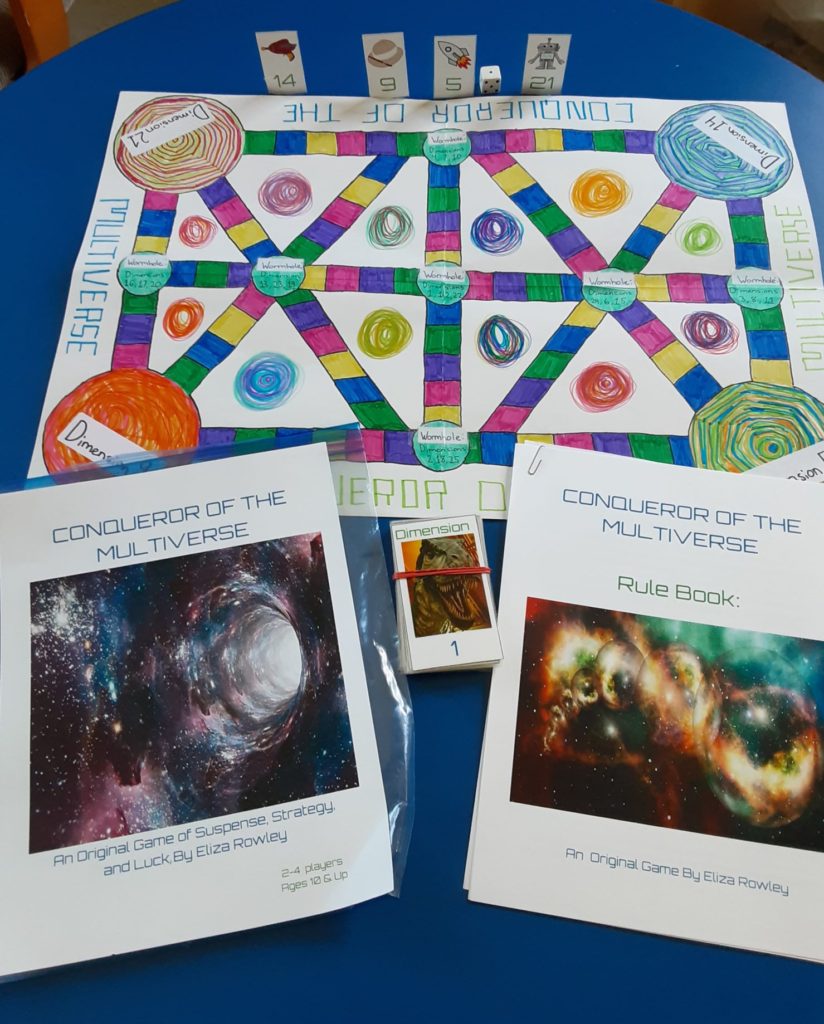
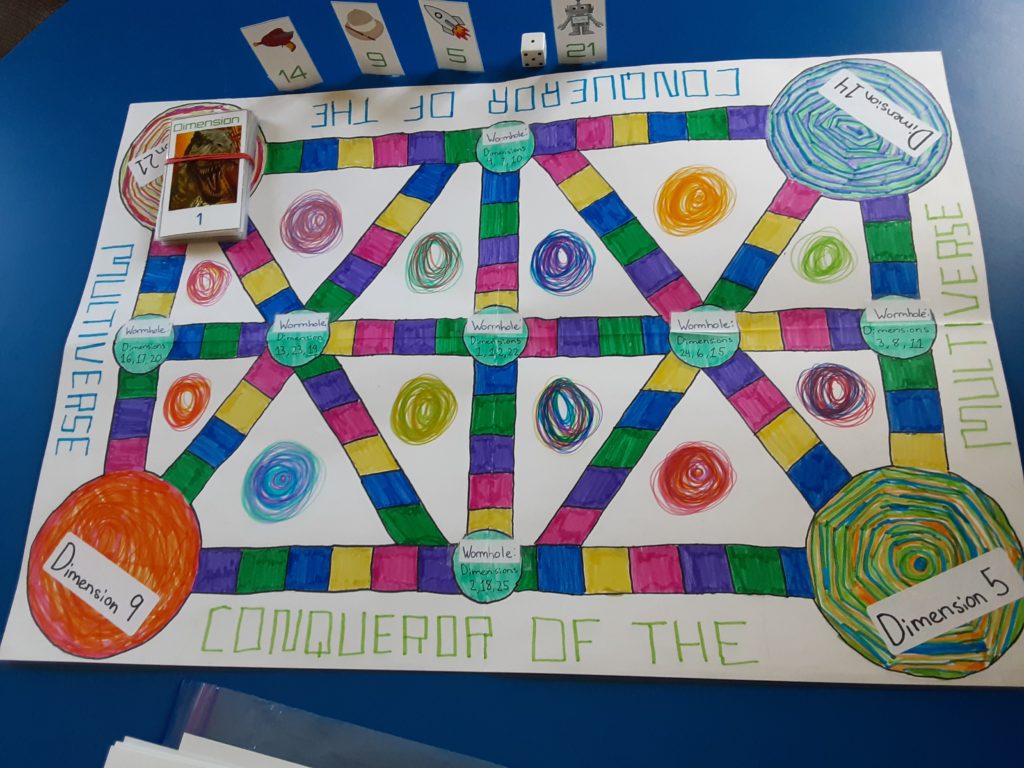
Another scout came up with a game in which you build a Lego wall. His game involved using dice and cards.
Take a look at some kid created games.
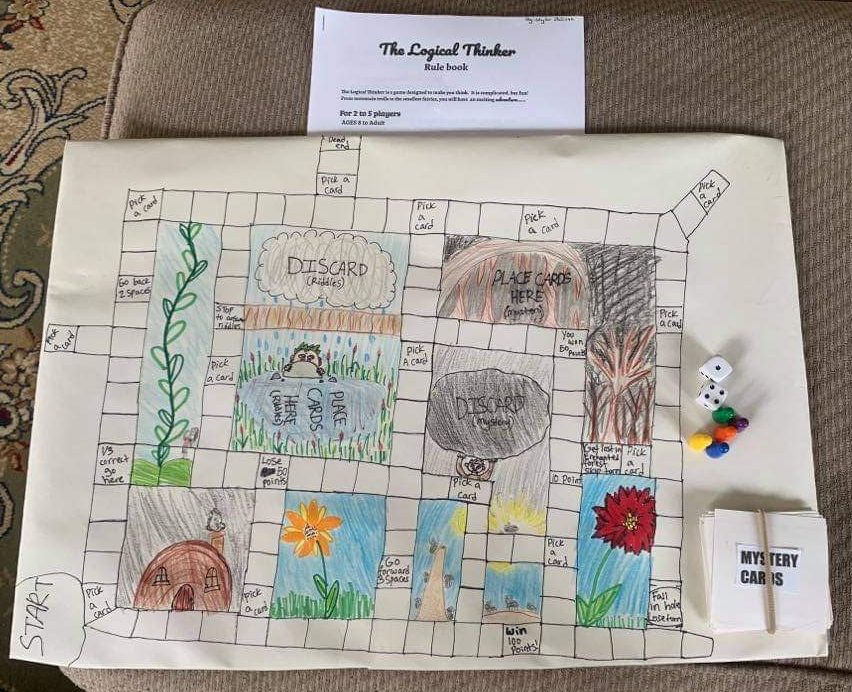
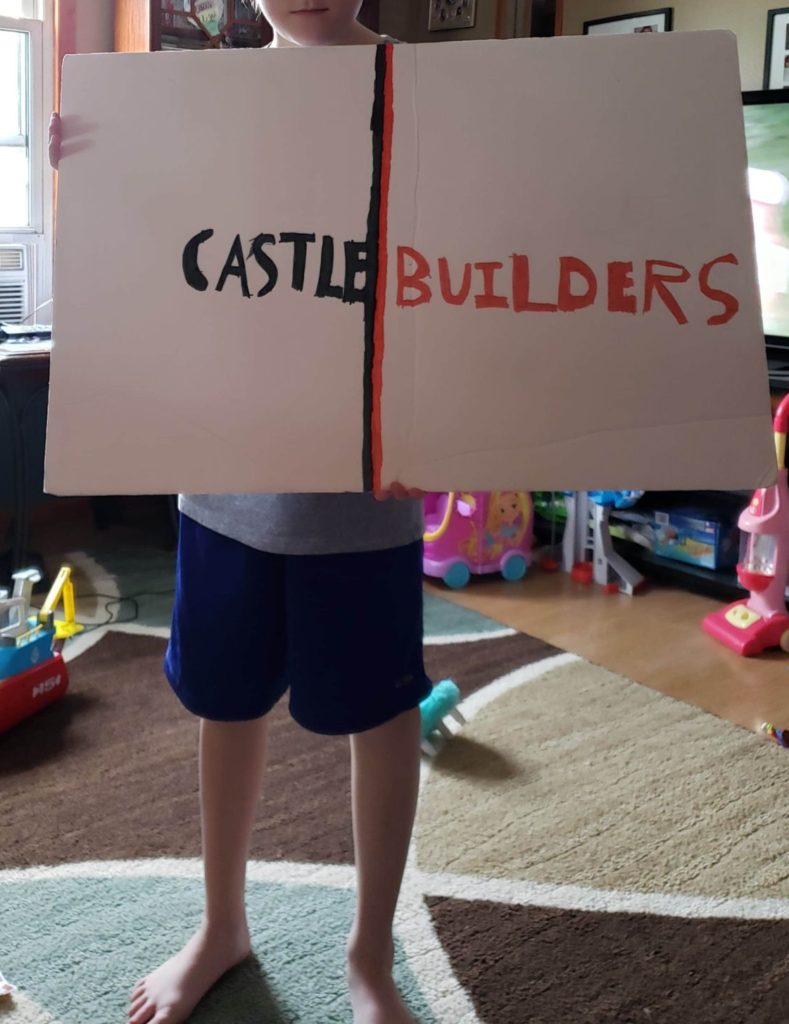
Now kids may find it hard fo come up with a concept and objective. It may be a little easier, though, if they look at the games they played earlier on. What was the purpose of those games? Did they have a story?
For example, what is the concept behind Monopoly? The players are in competition to buy as many properties as they can, so they can collect rent and build on each property in hopes of bankrupting the other players. If they are successful, they win.
If they look at the games they are familiar with, it will help a lot.
STEP 3: Figuring Out the Rules
Let me start by saying STEPS 3 and 4 may be interchangeable depending on the kid. Some may find it easier to come up with some basic rules for their game and build it. Other kids will want to build their game first and come up with the rules after.
Allow kids to do what works for them.
The point is that the rules need to be SUPER clear. I can’t stress this enough. They want people to be able to play their game WITHOUT them sitting there clarifying “what they meant.”
STEP 4: Developing the Materials
Depending on their game, teens will have different materials. Some may have boards, others dice and score sheets, while others will may create a computer game.
Most kids will find this part the most fun. They get to be creative and come up with a cool game.
STEP 5: Fine Tuning the Rules and Materials
You may need to prepare kids for this part. Kids will develop a game, play it with someone, and figure out something is wrong. They may not be clear with a rule, a game piece did work as well as they thought it would, or they decide the game design doesn’t work so well with their concept.
To my son’s dismay, he had many revisions of his game concept and rules before his final concept. For that reason, in Scouts they made the kids play their game with someone three times before they brought it to the merit badge counselor.
STEP 6: Final Game
In the end, everyone gets to try out the games. If it is a classroom, maybe you take a class period to play them. In a homeschool setting, kids can have their family play their final game. It will be so rewarding for kids to see others playing a game they developed themselves.

Incorporating this Fun Activity For Teens in Your Day
So, this sounds like a fun activity for teens. Now what? How do you get your teen to do it?
If your teen is bored in the summer, it can be a great way to break things up. You can have them create a game for a younger sibling. Maybe it can be a fun family thing. It is something that will stretch their brainpower and give them something to do.
Now, if you are in a school or homeschool setting, incorporate game making with something you are studying. Kids can create games to show what they’ve learned on a topic. They can build review games, games around the theme you are studying, whatever you can think up. It adds a little fun to your learning.
Here are some planning sheets to help you out. Download them below.
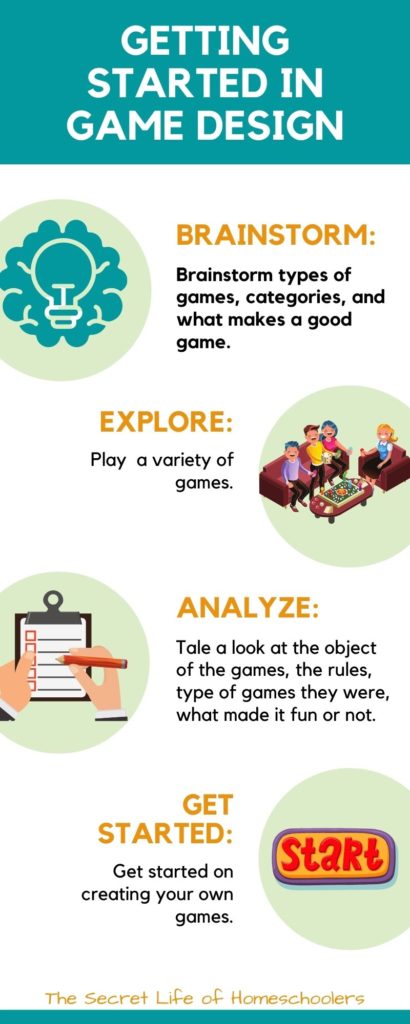
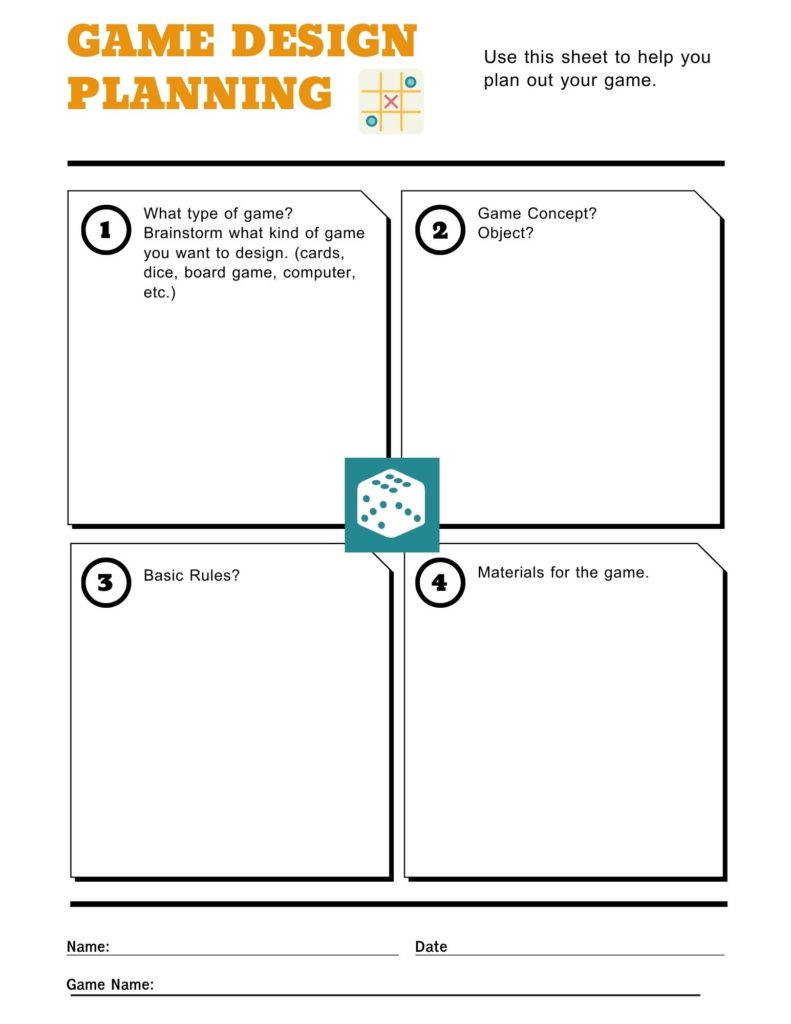
Benefits of this Activity for Teens (and Tweens)
Just at face value, kids are using so many skills when they create games. They need to plan, organize, problem-solve, and think critically, just to name a few. If you incorporate it into schooling, it adds even more value.
Another benefit of creating games is kids may even tap into the realm of STEM. Depending on their game, some may incorporate coding (technology), engineering, or aspects of math. You certainly have to think methodically like a scientist to make sure the game is clear to understand and play.
Lastly, creating a game allows kids to be creative, incorporate their interests, challenge themselves, and find the rewards of sharing their creation with others. Those are some great benefits, too.
So, if your teen needs something to do, or you are looking for a fun and engaging activity for teens, give game design a try. They are sure to enjoy it.
